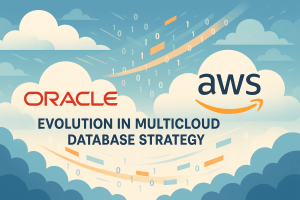![]()
Periods of significant transformation, like the move to digital business currently underway, create enormous uncertainty for every company. How well a company deals with that uncertainty, that stress, says a lot about the company’s culture and leadership. Does it take a longer-term view and reposition? Does it look for a white knight? Does it push the costs of uncertainty onto customers by cutting service and raising prices?
These questions become especially important if you see a strategic supplier start to thrash. A lot of IT vendors today are bouncing from strategy to strategy, and that should be very disconcerting to enterprise tech buyers. The only way to really keep track of worrisome vendor behavior is to enact a sourcing balanced scorecard. Indeed, any enterprise IT organization that isn’t taking a balanced scorecard approach to managing sourcing relationships is asking for trouble.
I found myself thinking about industry transformations, competitive uncertainties, and sourcing as I watched theCUBE interviews we recently conducted at AWS re:Invent 2017. All told, we interviewed more than 60 thought leaders on theCUBE at re:Invent this year. AWS CEO Andy Jassey dropped by, as did a number of other tech luminaries. It was our biggest show to date.
AWS is deeply disrupting the tech industry, and this year’s theCUBE re:Invent interviews provide a marvelous snapshot of the range of vendor responses. One, perhaps overly simple, way to characterize the conversations is by noting that vendors today can be differentiated by the degree to which they:
- Are technology-focused or customer-focused.
- Promote a public or hybrid cloud future.
Why is this important? Because over the years I’ve learned that during transformative periods, the best sources of technology are those that remain focused on customers and presume a hybrid solution approach. That combination typically best ensures that a vendor can respond to real customer problems with real and flexible solutions.
The BMC theCUBE interviews at re:Invent are a pretty good example of this. BMC has been in the business of IT management and automation for decades. It started out in the IBM mainframe space 35 years ago and has extended its portfolio of IT management and automation products to include new types of systems, platforms, services, and adjacent customer outcomes. But unlike some of its competitors, both older and newer, BMC has always remained admirably focused on customers, as its core portfolio gained greater relevance in an increasingly complex IT world.
What were the core messages?
- BMC’s mission remains, help customers succeed with IT.
- Helping customers succeed in IT today means helping them bridge public and private clouds without sacrificing IT governance.
- A path forward to cloud operating models starts with knowing what you have, both on-premise and in the cloud.
- New technologies are going to help make IT organizations more successful, too.
As you look at the interview clips, you – like me – generally will find yourself nodding in agreement with BMC’s statements. You may not agree fully with all of them, but BMC’s approach to the transformations facing CIOs and businesses today is reasonable and practical; it would score well on a balanced sourcing scorecard. Not all vendors are getting their approach to industry changes right. But, then again, most vendors don’t have 35 years of getting relationships right in their DNA.


